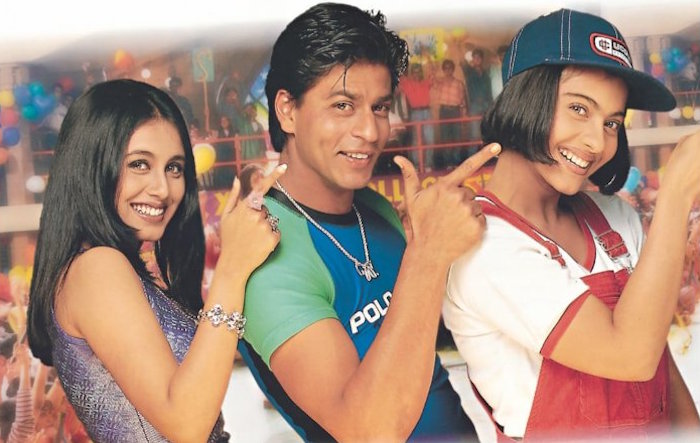
Let me preface this by saying I had a fantastic time watching Kuch Kuch Hota Hai this week. I think, though, that while Karan Johar's Bollywood musical is chock-full of catchy melodies, bright colors, and 90s nostalgia, its underlying messages about gender and what constitutes a happy family (and therefore a happy ending) are worth examining a little more critically.
For starters, Anjali Sharma's story arc is troubling in that it reinforces the cliche notion that women must look and act traditionally feminine in order for them to find a man. Teenage Anjali wears her hair short, dresses in sporty clothes, and loves playing basketball. She seems very true to herself and comfortable presenting the way she does, yet as an adult, we find her with hair well past her shoulders and wearing more feminine attire. By that point, too, she has not one but two male love interests. Regardless of whether or not Rahul harbored feelings for Anjali when they were young, he pursued and eventually married the prim girly-girl, Tina.
Not long into the film, however, Tina dies, leaving Rahul to raise their daughter who's named Anjali after their childhood friend who had since moved away. This is something he is actually quite capable of, with a little help from his mother. Their multi-generational household presents a viable alternative to the traditional heterosexual nuclear family. In fact, the homoerotic tension between Tina and Anjali Sharma throughout the flashback sequence covertly proposes yet another possibility. Ultimately, neither of those make the cut, and Rahul and Anjali marry in a typical Hollywood happy ending.
Kuch Kuch Hota Hai, as enjoyable as it is, is a prime example of popular cinema used as a vehicle to promote socially conservative ideals surrounding marriage, gender, and family. As consumers of those sorts of films, we're fed these messages over and over to the point where most of us internalize them and accept them as the truth. Obviously today there are mainstream films that push back against these traditional ideologies, but this is an interesting international example of how cinema can be wildly entertaining yet still advocate for conventional social norms when we look beneath the surface.



I'm glad Anajali had stayed true to herself even as she grew up. She had always been a bit of a tomboy, but even though she grew up to look girly, she still enjoyed playing her basketball and being playful!
ReplyDeleteIt's sort of scary to think that something so carefully designed to be entertaining and marketable to a wide range of ages and audiences can play a role in shaping our perceptions of what is 'normal' or 'acceptable', or like you said, the truth.
ReplyDeleteAnjali's transformation into more traditional femininity felt extremely cliche to me, like certain tropes in American rom-coms from the same period. Thankfully, the fact that we can so easily identify these problematic tropes today indicates that we have progressed since the film was released.
ReplyDeleteI really didn't like how they treated her transformation as a "glow up" too. It's hard to convince me that it was a glow-up because the only that improved about her was her confidence, but at the cost of her being herself. I also think it's a bit toxic because to me it seemed like she became more feminine specifically for men and not herself. So I think it showed and even somewhat reinforced a negative societal norm that women should be feminine, even if they don't want to.
ReplyDeleteI agree with Trent and I also think that the film not only shows that you must be traditionally feminine to find happiness, it also suggests that it works, which is an even more dangerous suggestion.
ReplyDelete